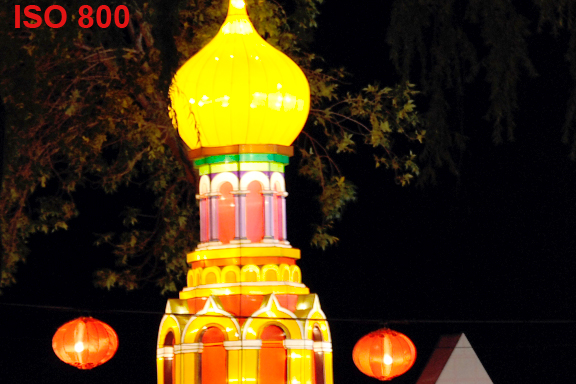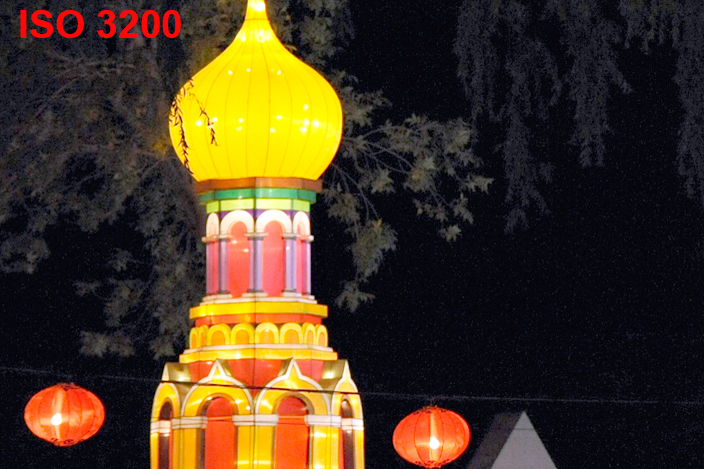Question
Most digital camera test reports on the Internet devote several pages to image quality at ISO 1600 and above. Now that I’m ready to trade up from a digicam to a DSLR, should I be really concerned about high ISO performance? When I was shooting with a Nikon F-601, I usually used ISO 100 to 400 film, and on a few occasions, Fujicolor 800, so why is ISO 3200 so important now? S.W.
Answer
Your question makes a valid point, S.W. In conventional photography, few photo enthusiasts ever used the very “fast” films. In fact, most retailers did not even stock print film faster than ISO 800 or slide film faster than ISO 400. But since digital cameras include built-in high sensitivity options — up to 6400 or even to 25,600 in some cases — this aspect receives a great deal of attention. And that’s not surprising, since high ISO quality is one obvious method for comparing various cameras.
Hence, consumers expect any detailed review to at least mention this aspect, even if it’s not one of the primary criteria for deciding which model is “best”. Especially today — when an increasing number of cameras and lenses are equipped with an image stabilizer — we rarely need to use an ISO above 1600. That level provides an adequately fast shutter speed to prevent blurring from camera shake in most low-light situations. In my own photography, I switch to ISO 3200+ only when shooting indoor sports; then that option is essential for a fast shutter speed to freeze the competitors’ motion.
Unless you intend to frequently photograph moving subjects in low light — or to shoot in unusually dark locations without flash or a tripod — you should be more concerned about other issues. That should include image quality at your most frequently used ISO levels, continuous autofocus performance and burst speed if you often shoot sports, convenience of operation, versatility, and the accuracy of exposure, white balance and autofocus. Since camera reviews also cover those aspects, simply concentrate on the most relevant sections of any test report instead of getting bogged down in high ISO photo comparisons.


Bill Millios
1 May 2009Another very important place for high ISO performance is at weddings – many venues will not allow flash during the ceremony, and even 2.8 glass sometimes isn’t enough. Being able to “turn up all the lights” with the higher ISO settings is a huge benefit.
I am delighted with my 5D Mark II.
PeterKBurian
1 May 2009Bill: Sure! Some photographers do need to use high ISO levels for specific reason, more often most camera owners do.
If you know that you will often need to work at ISO 1600 and above, superior quality at high ISO is more of a consideration than it is for the vast majority of people. And yes, the EOS 5D Mk II (and the Nikon D700) provide amazing quality at ISO 1600 and quite acceptable quality at ISO 3200.
Of course, they are large, heavy and expensive (around $3000 vs. $600 to $1000 for a more typical DSLR).
Cheers! Peter http://www.peterkburian.com
Matt Needham
2 May 2009Once upon a time ISO 100 film was considered high speed. Eventually they managed to crank that up to ISO 800 (I know there a few film boxes that are labeled higher number than 800, but read the fine print/tech pub). Now it’s not too hard to get decent results with common DSLRs at ISO 1600 and 3200, and those boundaries are being pushed by the high end gear. I expect we’ll be discussing 6 digit ISO numbers in the near future. Give me a camera that can shoot in places I’ve never been able to shoot in, and I will. 🙂
PeterKBurian
3 May 2009Matt: Several DLRs have an ISO of 25,600, including the D700. Not fabulous quality but not horrible with the D700 thanks to its huge pixels.
Of course, I rarely ever need even ISO 1600 so not sure when I would *ever* (in a lifetime) need ISO 25,600.
Peter
Theresa Nietfeld
7 Dec 2009When I was shooting large format (4×5), I used ISO 100 film and tray developed it. I have one handheld shot still on my wall made with a speed graphic. I also used a Calumet view with a Schneider lens. Personally, I do not see anything worthwhile beyond journalism in shooting above 800 iso. Not being a fan of weddings or having anything to do with photographing them I cannot judge the need for very high isos in those situations except to say that even the Canon 5d ii’s posted pictures taken at such isos do not look good to me. I would use a tripod for those situations where there just is not enough light. I have had my fill of pixel peeping that does not reflect any real use. You might as well be peering through infrared binoculars in many of these cases. Take a look at medium format digital cameras which have real uses outside of weddings and journalism and they do not have high isos and yet produce beautiful prints. I also have a print of Minor White’s on my wall taken with a view camera, it represents what I look for in photographs and it is a night shot of the moon over mountains, I’m sure taken with low ISO film.